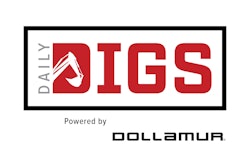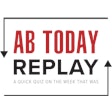IHRSA, the International Health, Racquet & Sportsclub Association, has kept a brave face throughout the economic meltdown and jobless recovery of 2008-10, repeatedly insisting that people encountering economic hardship will not give up their club memberships. More than that, they shouldn't. "Not taking care of yourself is not going to help you push through tough times," is the way IHRSA's spokeswoman, Rosemary Lavery, put it to a reporter from The Capital of Annapolis, Md. And, "People have shown that health clubs are an important, indispensable investment and not a luxury" (Pittsburgh Tribune Review), and "Memberships are an investment in your health and not a luxury; it's one of the best things you can do for yourself" (The Maryland Gazette).
Scolding has proven to trickle down to individual club owners. "I try to explain to them that now is the time they need their membership the most," Jamie Hardt, manager of a Milwaukee-area Anytime Fitness, told the Milwaukee Journal Sentinel late last year. "Regular workouts and physical fitness can help relieve stress, and being a club member offers opportunity to network with other members that can possibly lead to new job opportunities." But newspaper reporters are harder to control, which is how you get a story such as John Majeski's in Real Estate Weekly this spring that told of condominium owners developing on-site fitness centers to help attract all those health-conscious condo buyers who had dropped their club memberships - or who would drop them just as soon as they plunked down two hundred grand on new digs.
For all of Majeski's gloomy adjectives and metaphors used to describe the club industry - "dismal," a "treadmill of flat performance" - it has actually fared fairly well in comparison to, just to cite two notable examples, the manufacturing and marketing sectors. Although the association's tally of U.S. clubs has decreased, IHRSA reported a 2 percent increase in revenues among its member clubs in 2009 (granted, in comparison to a very poor 2008). And its 2010 first-quarter report, released last week, showed the industry holding steady so far this year. To wit: Total revenue, down 0.3 percent; membership dues, no change; non-dues revenue, up 0.2 percent.
Predictably, IHRSA's press release was titled, "IHRSA Quarterly Index Shows Improved U.S. Health Club Performance," with Jay Ablondi, executive vice president of global products, showing how to spin Majeski's treadmill into a 4-minute mile. "Comparable performance results for the overall index signals steadily improving performance as clubs recover from the economy," he said, to which I at first responded, "Huh?" Reading further, it turns out "a select group of clubs" showed increases in total revenue (4.2 percent), membership dues (2.4 percent) and non-dues revenue (9.6 percent).
Insert your cautionary quote about the dangers of statistics here. One wonders what percentage of the association's member clubs make up the unfortunate "non-select group," which must be on a treadmill that's been switched off, or broken, or (yikes) repossessed.




































